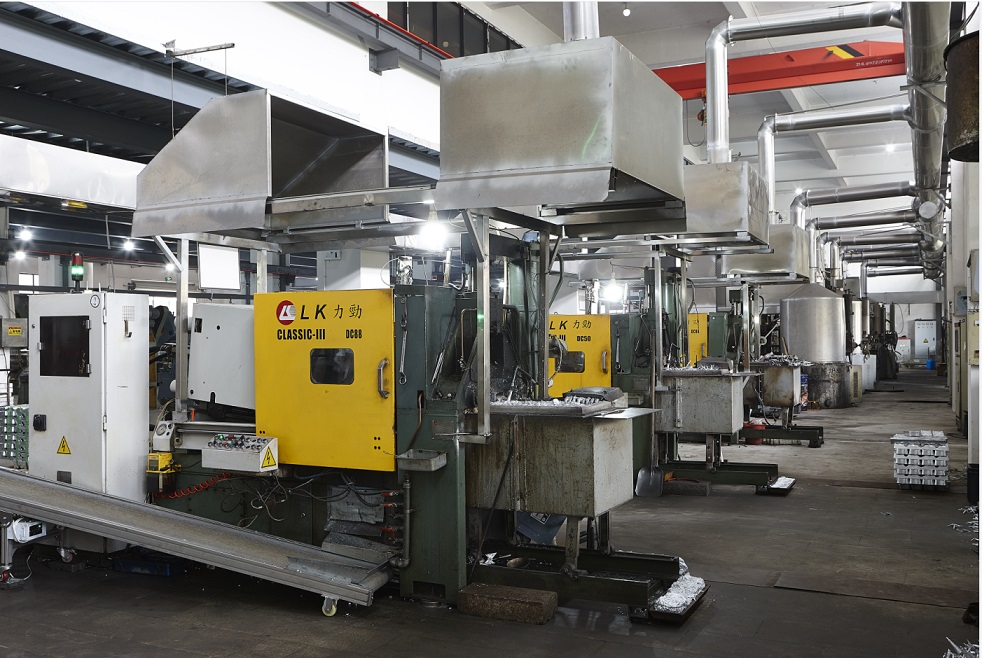Die casting is a crucial manufacturing process for producing high-quality locks. Here is a detailed description of the die casting process of LIDA Lock:
1. Preparation Stage
First and foremost, the raw materials need to be carefully selected. High-quality zinc alloy, aluminum alloy, or other suitable metal alloys, which possess excellent mechanical properties like strength, durability, and corrosion resistance, are commonly used for lock components. These raw materials are inspected thoroughly to ensure they meet the required standards in terms of purity and composition. Then, the metal is melted in a special crucible within an industrial furnace. The furnace is precisely controlled with temperature settings ranging typically from 380°C to 450°C for zinc alloys (the temperature may vary depending on the specific alloy formula). The melting process transforms the solid metal chunks into a liquid state, which is constantly stirred to ensure uniform temperature and alloy homogeneity, eliminating any possible segregation of different elements within the alloy.
2. Die Assembly and Preparation
Concurrently, the die casting dies, which are the molds used to shape the locks, are prepared. These dies are custom-made with high-precision machining to have the exact cavities and contours that match the desired lock design. They are made of hardened steel to withstand the high pressure and repeated use during the casting process. Before each casting cycle, the dies are thoroughly cleaned to remove any residual debris or oxides from previous runs. Then, a release agent is carefully applied to the inner surfaces of the die cavities. This release agent serves a dual purpose: it helps the newly formed lock part to be easily ejected from the die after casting and also protects the die surface from sticking and excessive wear caused by the molten metal.
3. Injection and Casting
Once the metal is fully melted and the dies are ready, the liquid metal is transferred into a shot sleeve of the die casting machine. The die casting machine, which can be a cold-chamber or hot-chamber type depending on the alloy used (cold-chamber for aluminum alloys, hot-chamber for zinc alloys usually), then exerts a tremendous amount of pressure through a piston mechanism. For example, pressures can reach up to several thousand pounds per square inch. Under this high pressure, the molten metal is rapidly injected into the die cavities, filling every intricate detail of the mold, such as the grooves for the keyway, the latch mechanism housing, and other complex features that make up the lock structure. The speed and pressure of injection are carefully calibrated to ensure complete filling without air entrapment, as trapped air can lead to defects like porosity in the final cast product.
4. Cooling and Solidification
After the molten metal fills the die cavities, a cooling process commences immediately. Cooling water channels that are built into the die structure start circulating chilled water around the die. This rapid cooling causes the liquid metal to solidify quickly into the desired lock shape. The cooling time is carefully controlled, usually lasting between a few seconds to a couple of minutes, depending on the size and thickness of the lock part being cast. Adequate cooling is essential to achieve the proper metallurgical structure, ensuring the strength and dimensional accuracy of the final product.
5. Ejection and Finishing
When the cast lock part has solidified completely, the two halves of the die are opened by the die casting machine’s mechanism. The newly formed lock component is then ejected from the die using ejector pins that push it out gently but firmly. Once ejected, the lock parts are inspected visually for any surface defects like cracks, burrs, or incomplete filling. Minor burrs are removed through grinding or deburring processes, and any surface imperfections are smoothed out. Then, the parts may undergo further treatments such as electroplating to enhance their appearance and corrosion resistance, or they are assembled with other components to form a complete lock ready for packaging and shipment to customers. This entire die casting process repeats continuously in the lock factory, churning out a large quantity of locks with consistent quality and precision.
Post time: Nov-28-2024

